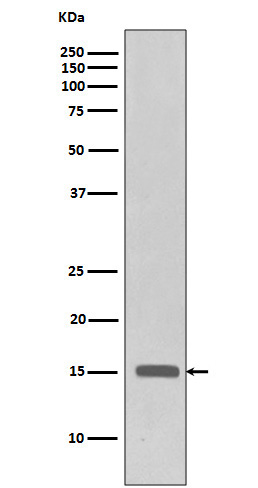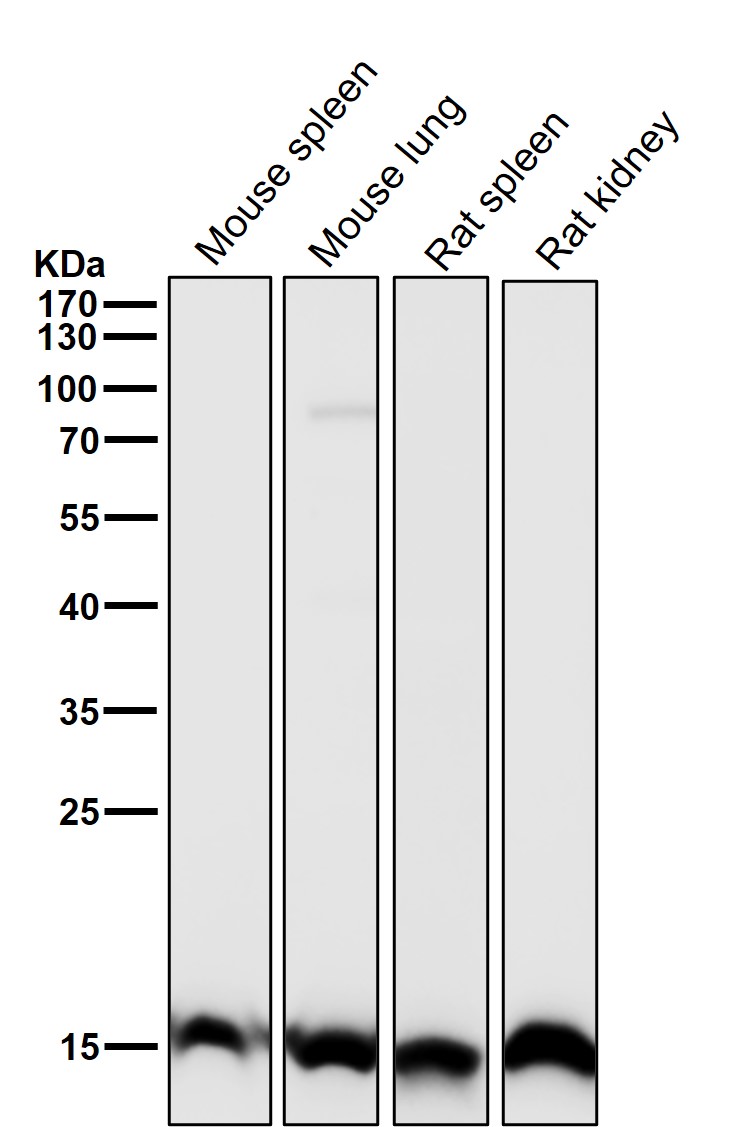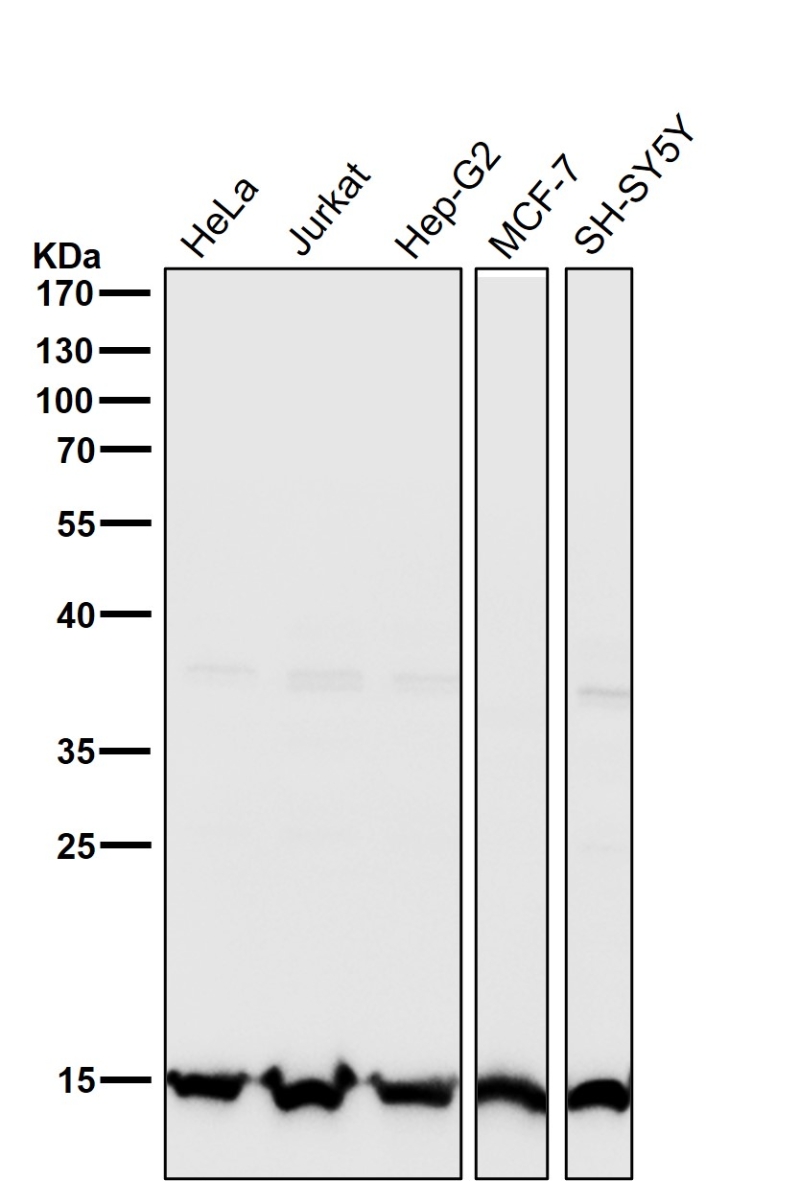


| WB | 咨询技术 | Human,Mouse,Rat |
| IF | ChIP:1/20-1/50 | Human,Mouse,Rat |
| IHC | IHC:1/100-1/200;IHF:1/50-1/200 | Human,Mouse,Rat |
| ICC | 1/50-1/200 | Human,Mouse,Rat |
| FCM | 咨询技术 | Human,Mouse,Rat |
| Elisa | 咨询技术 | Human,Mouse,Rat |
| Aliases | Histone H3.1, Histone H3, HIST1H3A;;TriMethyl-Histone H3 (K28) |
| WB Predicted band size | 15 kDa |
| Host/Isotype | Rabbit IgG |
| Antibody Type | Primary antibody |
| Storage | Store at 4°C short term. Aliquot and store at -20°C long term. Avoid freeze/thaw cycles. |
| Species Reactivity | Human,Mouse |
| Immunogen | A synthesized peptide derived from human Histone H3.1 around the methylation site of K28 |
| Formulation | Purified antibody in PBS with 0.05% sodium azide,0.05% BSA and 50% glycerol. |
+ +
以下是3篇关于Histone H3(trimethylK27)抗体的参考文献及摘要概括:
1. **"Role of histone H3 lysine 27 methylation in Polycomb-group silencing"**
- **作者**: Cao, R. et al. (2002)
- **摘要**: 该研究首次揭示了H3K27me3在Polycomb蛋白介导的基因沉默中的关键作用,通过特异性抗体验证了H3K27三甲基化修饰与基因抑制的关联,并建立了其与发育调控的关系。
2. **"Drosophila enhancer of Zeste/ESC complexes have a histone H3 methyltransferase activity that marks chromosomal Polycomb sites"**
- **作者**: Czermin, B. et al. (2002)
- **摘要**: 利用H3K27me3抗体,研究团队证明了果蝇E(Z)/ESC复合体的组蛋白甲基转移酶活性,揭示了该修饰在染色质结合和基因调控中的机制,为表观遗传调控提供了实验依据。
3. **"Polycomb complexes repress developmental regulators in murine embryonic stem cells"**
- **作者**: Boyer, L.A. et al. (2006)
- **摘要**: 通过ChIP-seq结合H3K27me3抗体,发现Polycomb蛋白通过该修饰靶向抑制胚胎干细胞中发育相关基因,强调了其在维持多能性和分化调控中的核心功能。
4. **"Immunological comparison of histone H3 methylated at lysine 27 in different organisms"**
- **作者**: van der Vlag, J. & Otto, S. (2005)
- **摘要**: 系统性评估了多种H3K27me3抗体的物种交叉反应性和特异性,为跨物种研究该修饰的实验设计提供了抗体选择标准和技术指导。
这些文献覆盖了H3K27me3的功能机制、实验验证及抗体应用技术,适用于表观遗传学、发育生物学和癌症研究领域。
Histone H3 trimethylated at lysine 27 (H3K27me3) is a post-translational modification associated with transcriptional repression and chromatin compaction. This epigenetic mark is primarily deposited by Polycomb Repressive Complex 2 (PRC2), with EZH2 serving as the catalytic subunit. H3K27me3 plays crucial roles in maintaining cellular identity by silencing lineage-specific genes during development and differentiation. It is particularly important in X-chromosome inactivation, genomic imprinting, and stem cell pluripotency.
Antibodies targeting H3K27me3 have become essential tools for studying epigenetic regulation. They enable detection of this modification through techniques like chromatin immunoprecipitation (ChIP), immunofluorescence, and Western blotting. In cancer research, these antibodies help investigate the aberrant silencing of tumor suppressor genes, as elevated H3K27me3 levels are linked to aggressive malignancies and poor prognosis. Notably, loss of H3K27me3 in certain tumors serves as a diagnostic marker for specific cancers like malignant peripheral nerve sheath tumors.
Recent studies also explore H3K27me3's role in metabolic memory and neurodegenerative diseases. Commercial antibodies are typically validated using knockout cell lines or peptide competition assays to ensure specificity. Researchers must consider potential cross-reactivity with similar histone modifications (e.g., H3K27me2/me1) and optimize experimental conditions for different biological contexts. These reagents continue to advance our understanding of epigenetic mechanisms in health and disease.
×